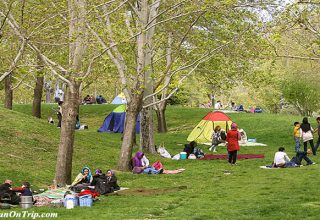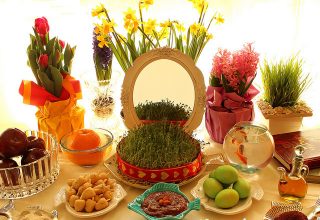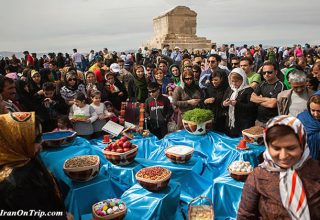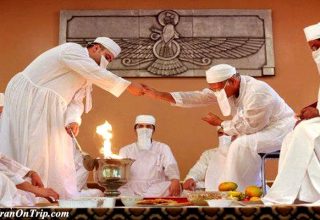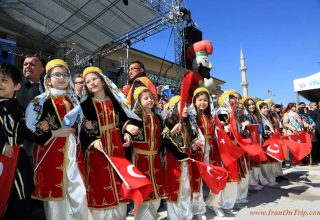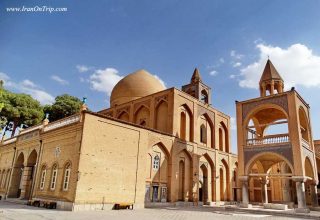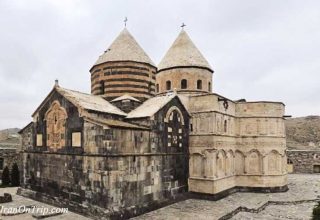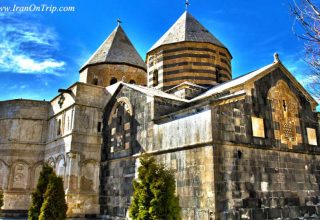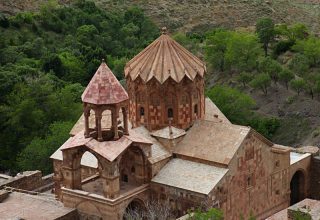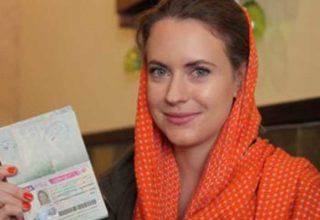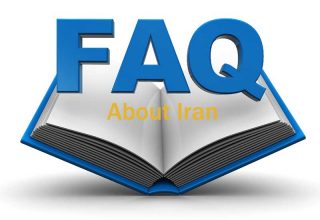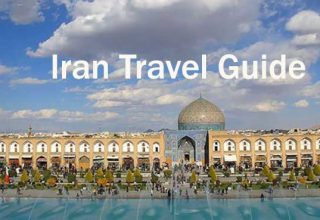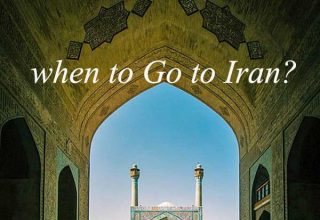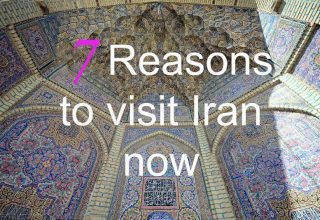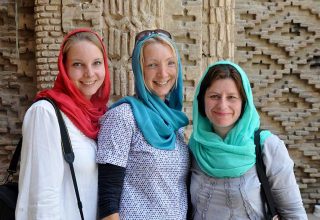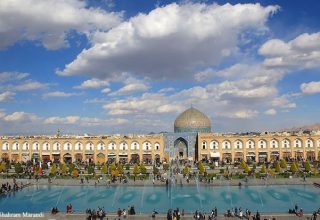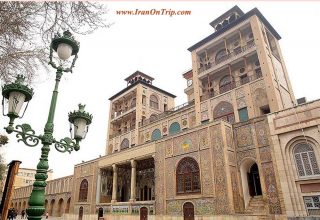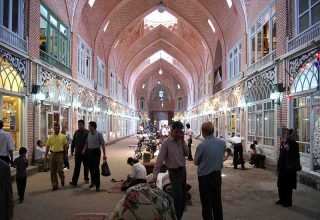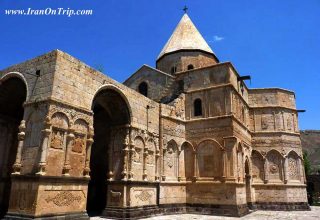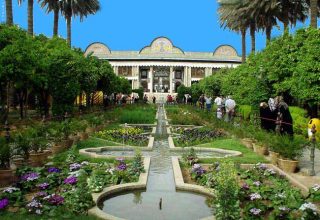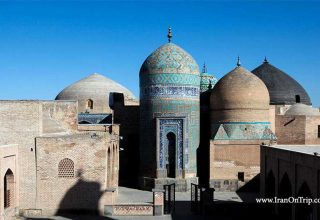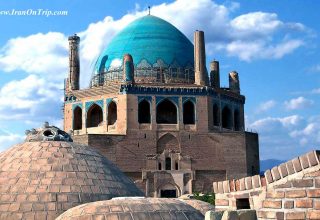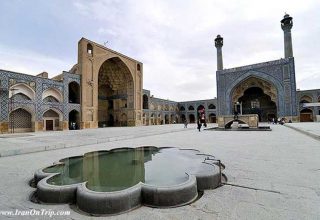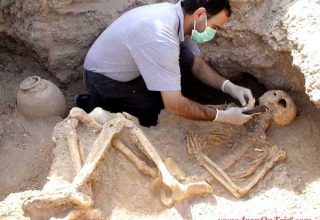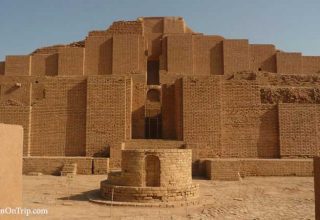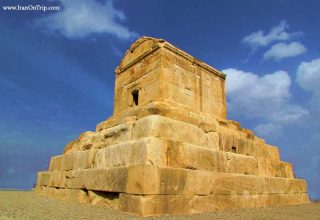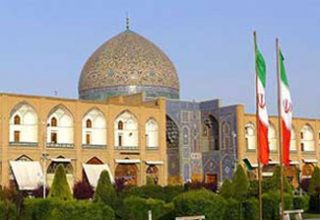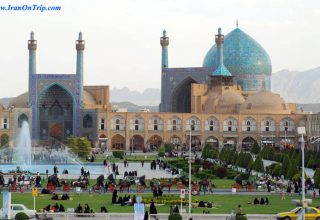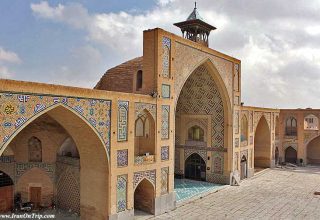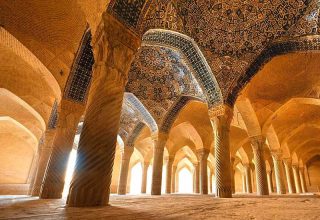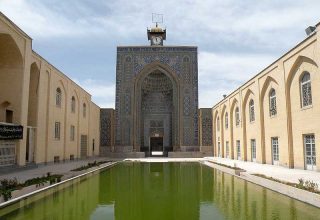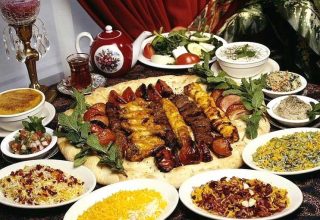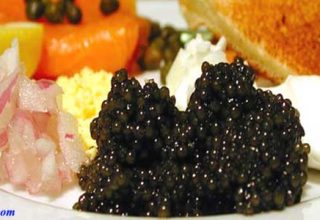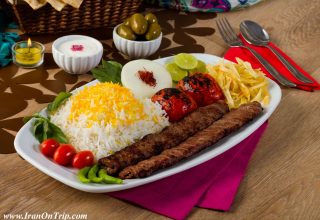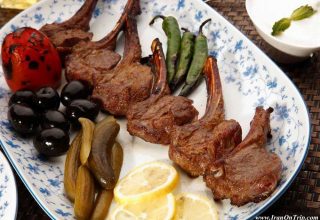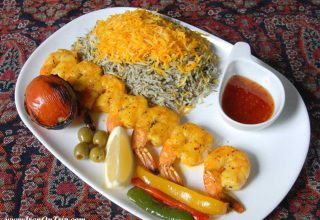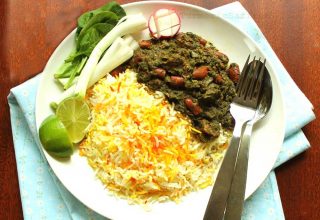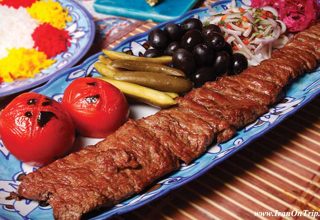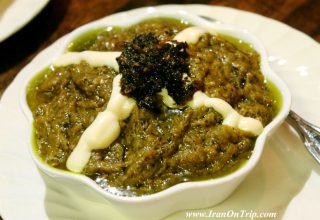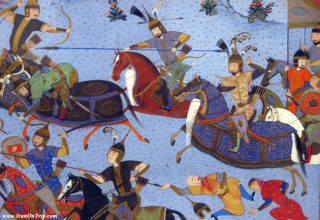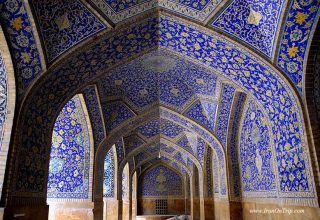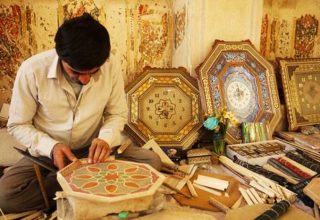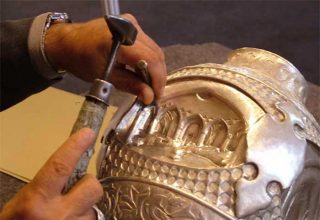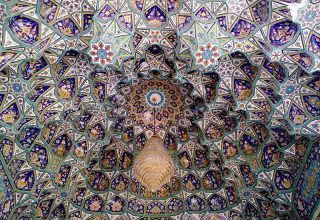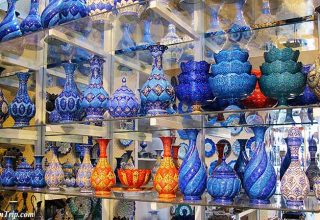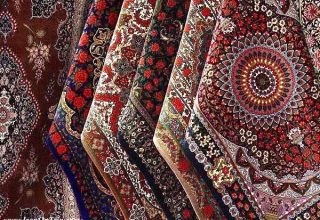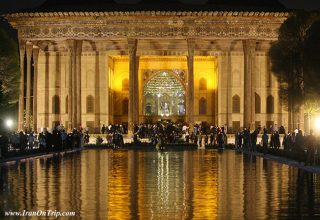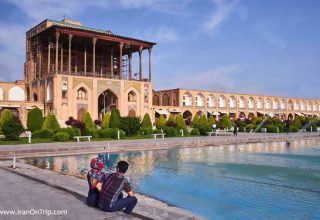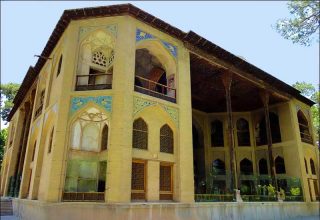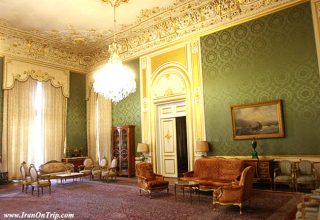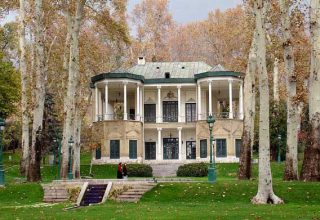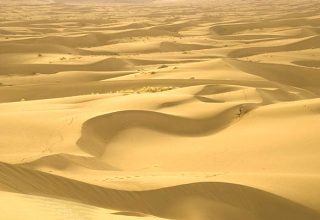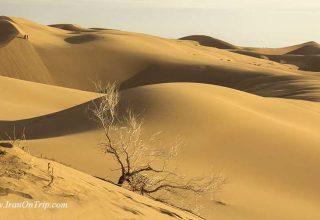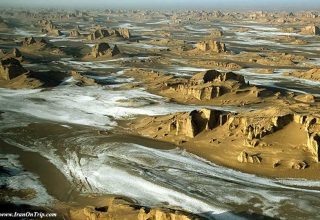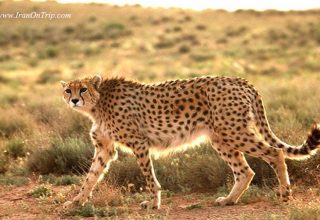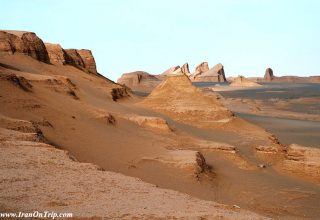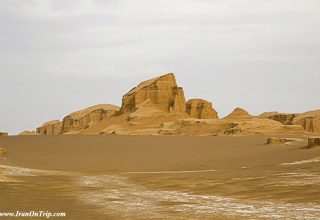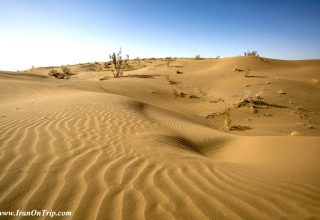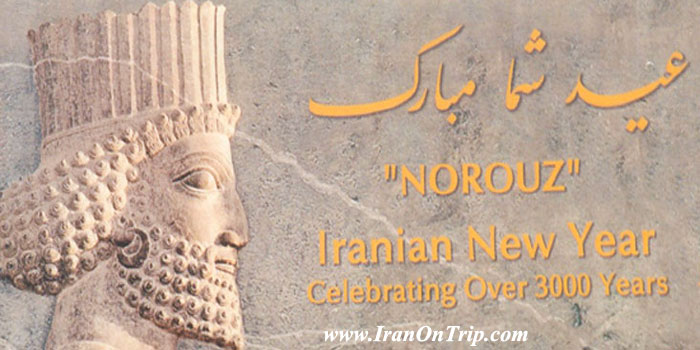
History and tradition
The celebration has its roots in Ancient Iran. Due to its antiquity, there exist various foundation myths for Nowruz in Iranian mythology. In the Zoroastrian tradition, the seven most important Zoroastrian festivals are the Gahambars and Nowruz, which occurs at the spring equinox. According to Mary Boyce,
“It seems a reasonable surmise that Nowruz, the holiest of them all, with deep doctrinal significance, was founded by Zoroaster himself.”
Between sunset on the day of the 6th Gahanbar and sunrise of Nowruz, Hamaspathmaedaya (later known, in its extended form, as Frawardinegan) was celebrated. This and the Gahanbar are the only festivals named in the surviving text of the Avesta.
The Shahnameh, dates Nowruz as far back to the reign of Jamshid, who in Zoroastrian texts saved mankind from a killer winter that was destined to kill every living creature.The mythical Persian King Jamshid (Yima or Yama of the Indo-Iranian lore) perhaps symbolizes the transition of the Indo-Iranians from animal hunting to animal husbandry and a more settled life in human history. In the Shahnameh and Iranian mythology, he is credited with the foundation of Nowruz. In the Shahnama, Jamshid constructed a throne studded with gems. He had demons raise him above the earth into the heavens; there he sat on his throne like the sun shining in the sky. The world’s creatures gathered in wonder about him and scattered jewels around him, and called this day the New Day or No/Now-Ruz. This was the first day of the month of Farvardin (the first month of the Persian calendar).
The Persian scholar Abu Rayhan Biruni of the 10th century AD, in his Persian work “Kitab al-Tafhim li Awa’il Sina’at al-Tanjim” provides a description of the calendar of various nations. Besides the Persian calendar, various festivals of Arabs, Jews, Sabians, Greeks and other nations are mentioned in this book. In the section on the Persian calendar (Persian: تقویم پارسیان), he mentions Nowruz, Sadeh, Tiregan, Mehregan, the six Gahanbar, Parvardegaan, Bahmanja, Isfandarmazh and several other festivals. According to him: It is the belief of the Persians that Nowruz marks the first day when the universe started its motion.The Persian historian Abu Saʿīd Gardēzī in his work titled Zayn al-Akhbār under the section of the Zoroastrians festivals mentions Nowruz (among other festivals) and specifically points out that Zoroaster highly emphasized the celebration of Nowruz and Mehregan.
History
Although it is not clear whether proto-Indo-Iranians celebrated a feast as the first day of the calendar, there are indications that both Iranians and Indians may have observed the beginning of both autumn and spring, related to the harvest and the sowing of seeds, respectively, for the celebration of new year.
Boyce and Grenet explain the traditions for seasonal festivals and comment: “It is possible that the splendor of the Babylonian festivities at this season led the Persians to develop their own spring festival into an established new year feast, with the name Navasarda ‘New Year’ (a name which, though first attested through Middle Persian derivatives, is attributed to the Achaemenian period). Since the communal observations of the ancient Iranians appear in general to have been a seasonal ones, and related to agriculture, it is probable, that they traditionally held festivals in both autumn and spring, to mark the major turning points of the natural year”.
We have reasons to believe that the celebration is much older than that date and was surely celebrated by the people and royalty during the Achaemenid times (555–330 BC). It was, therefore, a highly auspicious occasion for the ancient Iranian peoples. It has been suggested that the famous Persepolis complex, or at least the palace of Apadana and the Hundred Columns Hall, were built for the specific purpose of celebrating Nowruz. Although, there may be no mention of Nowruz in recorded Achaemenid inscriptions . There is a detailed account by Xenophon of Nowruz celebration taking place in Persepolis and the continuity of this festival in the Achaemenid tradition.
in 539 BC the Jews came under Persian rule thus exposing both groups to each other’s customs. According to Encyclopædia Britannica, the story of Purim as told in the Book of Esther is adapted from a Persian novella about the shrewdness of harem queens suggesting that Purim may be a transformation of the Persian New Year.A specific novella is not identified and Encyclopædia Britannica itself notes that “no Jewish texts of this genre from the Persian period are extant, so these new elements can be recognized only inferentially”. The Encyclopaedia of Religion and Ethics notes that the Purim holiday is based on a lunar calendar while Nowruz occurs at the spring equinox (solar calendar). The two holidays are therefore celebrated on different dates but within a few weeks of each other, depending on the year. Both holidays are joyous celebrations. Given their temporal associations, it is possible that the Jews and Persians of the time may have shared or adopted similar customs for these holidays.[46] The story of Purim as told in the Book of Esther has been dated anywhere from 625–465 BC (although the story takes place with the Jews under the rule of the Achaemenid Empire and the Jews had come under Persian rule in 539 BC), while Nowruz is thought to have first been celebrated between 555–330 BC. It remains unclear which holiday was established first.
Nowruz was the holiday of Arsacid/Parthian dynastic Empires who ruled Iran (248 BC-224 AD) and the other areas ruled by the Arsacid dynasties outside Parthia. (Such as by the Arsacid dynasty of Armenia and Iberia) There are specific references to the celebration of Nowruz during the reign of Vologases I (51–78 AD), but these include no details.Before Sassanids established their power in West Asia around 300 AD, Parthians celebrated Nowruz in Autumn and 1st of Farvardin began at the Autumn Equinox. During Parthian dynasty the Spring Festival was Mehragan, a Zoroastrian and Iranian festival celebrated in honor of Mithra.
Extensive records on the celebration of Nowruz appear following the accession of Ardashir I of Persia, the founder of the Sassanid dynasty (224–651 AD). Under the Sassanid Emperors, Nowruz was celebrated as the most important day of the year. Most royal traditions of Nowruz such as royal audiences with the public, cash gifts, and the pardoning of prisoners, were established during the Sassanian era and persisted unchanged until modern times.
Nowruz, along with Sadeh (celebrated in mid-winter), survived in society following the introduction of Islam in 650 AD. Other celebrations such Gahanbar and Mehragan were eventually side-lined or were only followed by the Zoroastrians, who carried them. It was adopted as the main royal holiday during the Abbasid period.
In the book Nowruznama (“Book of the New Year”, which is attributed to Omar Khayyam,a well known Persian poet and Mathematician, a vivid description of the celebration in the courts of the Kings of Persia is provided:
“From the era of Kai Khusraw till the days of Yazdegard, last of the pre-Islamic kings of Persia, the royal custom was thus: on the first day of the New Year, Now Ruz, the King’s first visitor was the High Mobad of the Zoroastrians, who brought with him as gifts a golden goblet full of wine, a ring, some gold coins, a fistful of green sprigs of wheat, a sword, and a bow. In the language of Persia he would then glorify God and praise the monarch. This was the address of the High Mobad to the king : “O Majesty, on this feast of the Equinox, first day of the first month of the year, seeing that thou hast freely chosen God and the Faith of the Ancient ones; may Surush, the Angel-messenger, grant thee wisdom and insight and sagacity in thy affairs. Live long in praise, be happy and fortunate upon thy golden throne, drink immortality from the Cup of Jamshid; and keep in solemn trust the customs of our ancestors, their noble aspirations, fair gestures and the exercise of justice and righteousness. May thy soul flourish; may thy youth be as the new-grown grain; may thy horse be puissant, victorious; thy sword bright and deadly against foes; thy hawk swift against its prey; thy every act straight as the arrow’s shaft. Go forth from thy rich throne, conquer new lands. Honor the craftsman and the sage in equal degree; disdain the acquisition of wealth. May thy house prosper and thy life be long!”
Following the demise of the Caliphate and the subsequent re-emergence of Persian dynasties such as the Samanids and Buyids, Nowruz was elevated to an even more important event. The Buyids revived the ancient traditions of Sassanian times and restored many smaller celebrations that had been eliminated by the Caliphate. According to the Syrian historian Yaqut al-Hamawi, the Iranian Buyid ruler ʿAżod-od-Dawla (r. 949-83) customarily welcomed Nowruz in a majestic hall, wherein servants had placed gold and silver plates and vases full of fruit and colorful flowers.[50] The King would sit on the royal throne (masnad), and the court astronomer came forward, kissed the ground, and congratulated him on the arrival of the New Year.The king would then summon musicians and singers, and invited his boon companions. They would gather in their assigned places and enjoy a great festive occasion.
Even the Turkic and Mongol invaders did not attempt to abolish Nowruz in favor of any other celebration. Thus, Nowruz remained as the main celebration in the Persian lands by both the officials and the people
All about Nowruz in Iran and ceremony – Ceremonies of Iran – Nowruz ceremony – History of Nowruz – Nowruz in Iran – No Rooz in Iran – Iranian Ceremonies


